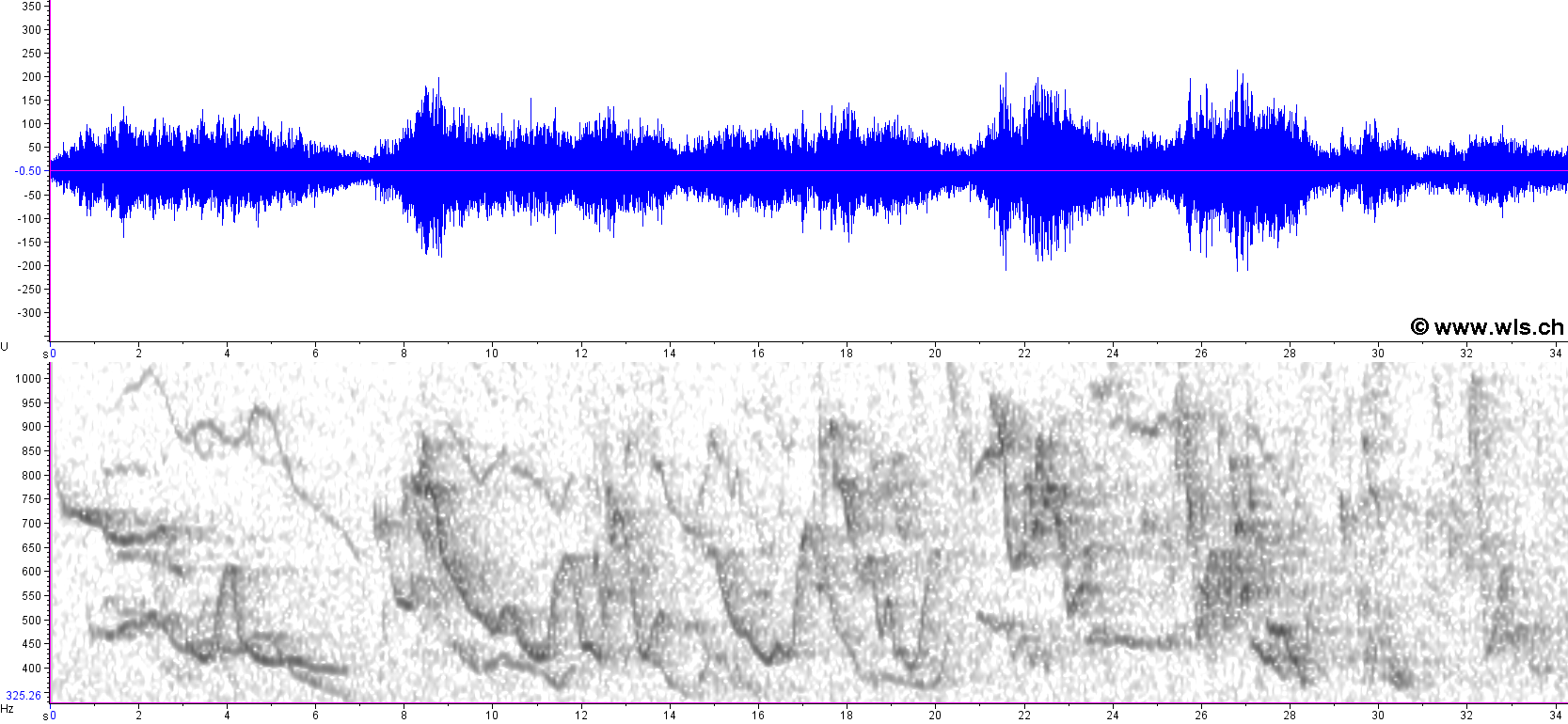BIOACOUSTICS
Wolves communicate olfactorically and acoustically within the pack and with the packs of the surrounding area. Depending on topography and wind conditions wolf howling can be heard over large distances. Wolves howl at the borders as well as in core areas of their territory. High quality recordings not only allow the detection of a wolf pack but also the determination of the number of wolves present, the single identification of individuals and the provision of information on activity and spatial use of their habitat.

Italian wolf (Canis lupus italicus)
The Moustached Warbler is a rare breeding bird in Switzerland. In comparison with Eurasian Reed Warbler (Acrocephalus scirpaceus), the singing of the Moustached Warbler is softer and more diversified. The reminiscence of the Nightingale’s introduction syllable and the imitations of the trilling call of the Red Kite are typical elements of the Moustached Warbler’s singing.

Moustached Warbler (Acrocephalus melanopogon)
Although only 4 cm in length, a male Treefrog can reach a volume of up to 90 dB using its throat sack. The calls of Treefrogs can be heard over a distance of more than one kilometre.

Treefrog (Hyla arborea)
The song of the Wood Cricket is more discreet than the one of the related Field Cricket. The characteristic stutter of the Wood Cricket’s song results from short breaks (0.1-0.2 sec) during singing/stridulation.

Wood Cricket (Nemobius sylvestris)
The blaring syllables of the Bow-winged grasshopper gradually become louder towards the end of the song.

Bow-winged grasshopper (Chorthippus biguttulus)
under construction
For the common noctule (Nyctalus noctula) 10-20 ms long ultrasonic location signals are typical. Compared to other indigenous bats these signals have a relatively low frequency.

Common noctule (Nyctalus noctula)

